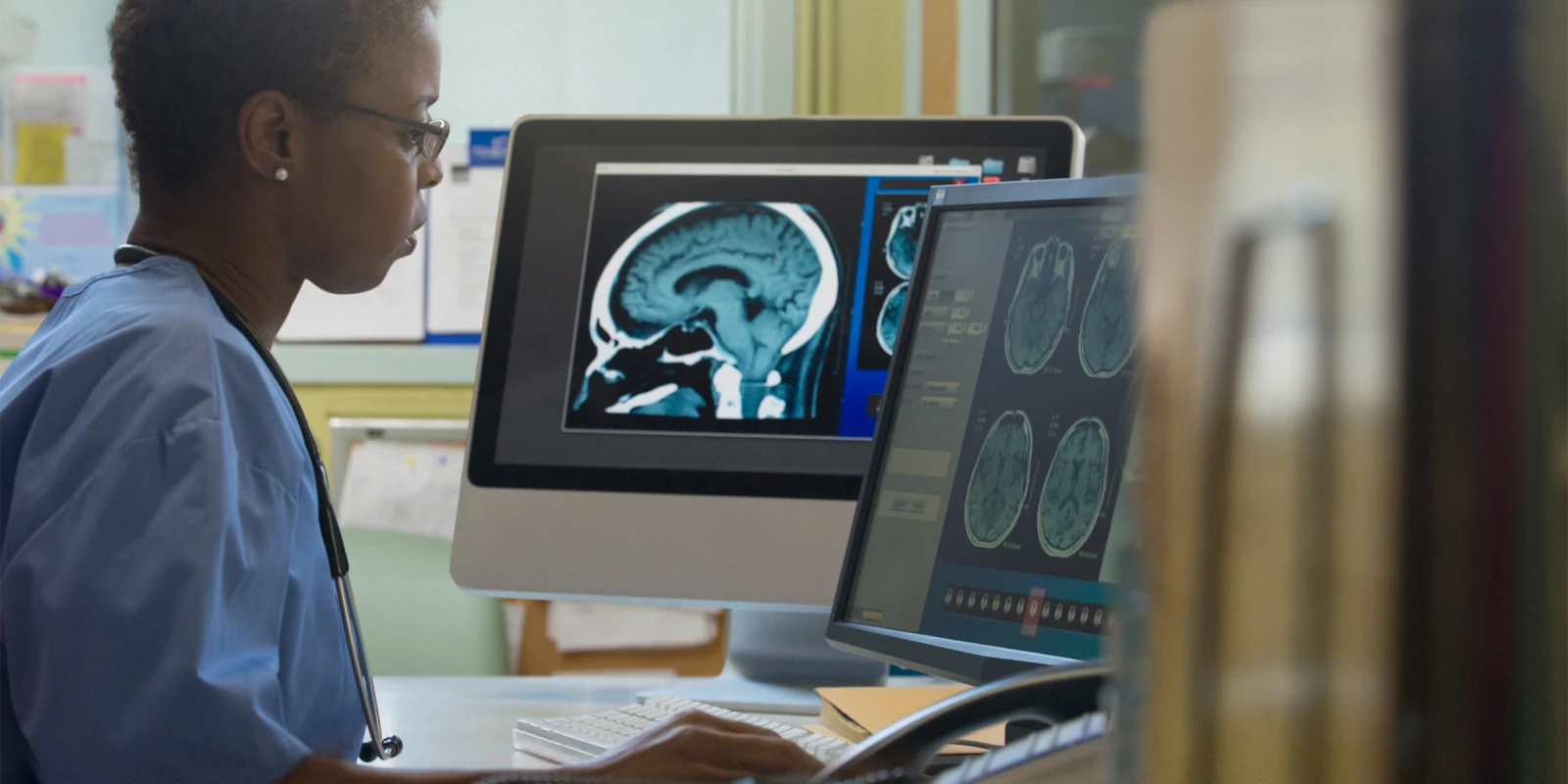Dr. Joshua Davis is a 2020–2021 Doximity Research Review Fellow. Nothing in this article is intended nor implied to constitute professional medical advice or endorsement. The views expressed in this article are those of the author and do not necessarily reflect the views/position of Doximity.
Dizziness can be related to a wide range of pathologies, from anemia to dehydration to hypertension to peripheral vertigo to acute ischemic stroke. Combined with patients’ notorious inability to report their symptoms accurately, dizziness is one of the most common (and frustratingly nonspecific) presenting complaints in ED patients.
Acute posterior stroke is one of the rare neurologic emergencies that can cause “dizziness.” This type of dizziness is typically described as vertigo and associated with nystagmus. Unfortunately, it is an oft-missed diagnosis with devastating consequences. A CT scan, the test rapidly available in most EDs, is very inaccurate in visualizing the posterior fossa. Even MRI, which is often considered the “gold standard,” can miss up to 30% of posterior strokes when performed acutely within the first 24 hours.
History and exam are therefore very important in identifying patients with acute posterior stroke. The Head Impulse, Nystagmus, and Test of Skew (HINTS) exam was developed specifically for this indication and shown to be more accurate than MRI for diagnosis. However, though HINTS is exceedingly accurate when performed by specially trained neuro-ophthalmologists, it is much less accurate when performed by general neurologists or emergency physicians.
Recently, Wang et al. performed a study on 85 patients with vertigo in an attempt to identify a more accurate risk stratification tool for the diagnosis of acute posterior stroke. They showed that the ABCD2 score (yes, the one we use for TIA) combined with central nystagmus was more accurate than HINTS alone. Thus, central nystagmus (bidirectional gaze evoked, vertical, or torsional) and an ABCD2 >4 was 100% sensitive and 100% specific for the diagnosis of acute posterior stroke. While HINTS alone was also 100% sensitive, it was only 80% specific.
The HINTS exam has several important limitations, the first of which is that it was designed to be used only in patients with vertigo and nystagmus at rest. In practice, it is applied to other “dizzy” patients. Interestingly, Wang et al. used HINTS in any patient presenting with dizziness or vertigo at time of examination without an obvious cause, including 14 without nystagmus at rest. They found that four out of 14 patients (29%) had an acute posterior stroke but no nystagmus at rest. HINTS has also had limited uptake due to the complexity of its terminology. For example, a positive head impulse is indicative of peripheral lesion; whereas, a positive test of skew is indicative of a central lesion. Using only central nystagmus, along with the other risk factors in the ABCD2 score, may be an appealing alternative to HINTS, given its simplicity and accuracy.
Personally, I have found HINTS difficult to perform, difficult to remember, and a time-consuming exam in the context of a time-sensitive diagnosis like acute stroke. Though I will continue using HINTS in my current practice, I plan to start trialing nystagmus-only testing, correlating it with ABCD2 scores and stroke workup results. If my trialing yields results similar to those in the Wang et al. study, I think nystagmus-only testing will quickly become the more feasible option.
Dr. Joshua Davis is an emergency physician who completed his residency at Penn State Milton S. Hershey Medical Center. He completed medical school at Thomas Jefferson University and received his undergraduate degree from the University of Delaware. His research interests are broad and include emergency medicine topics along with patient safety, handoff communication, and diet and exercise.






